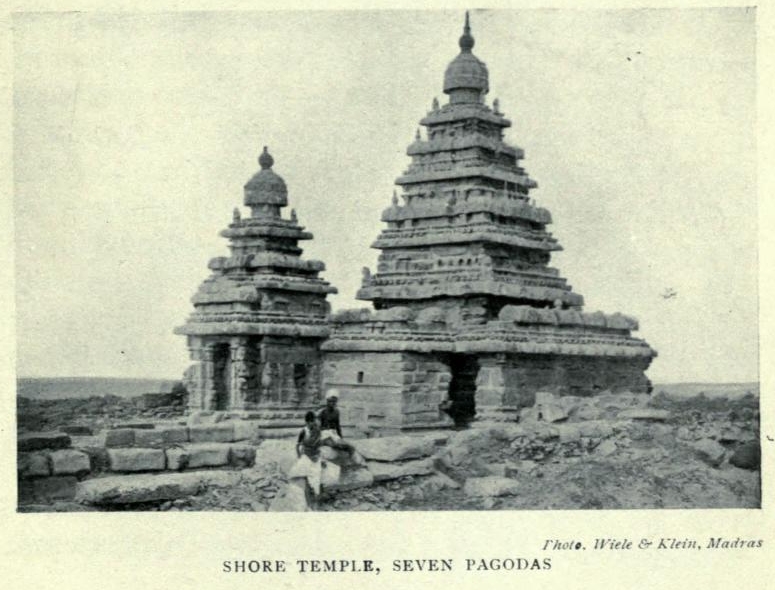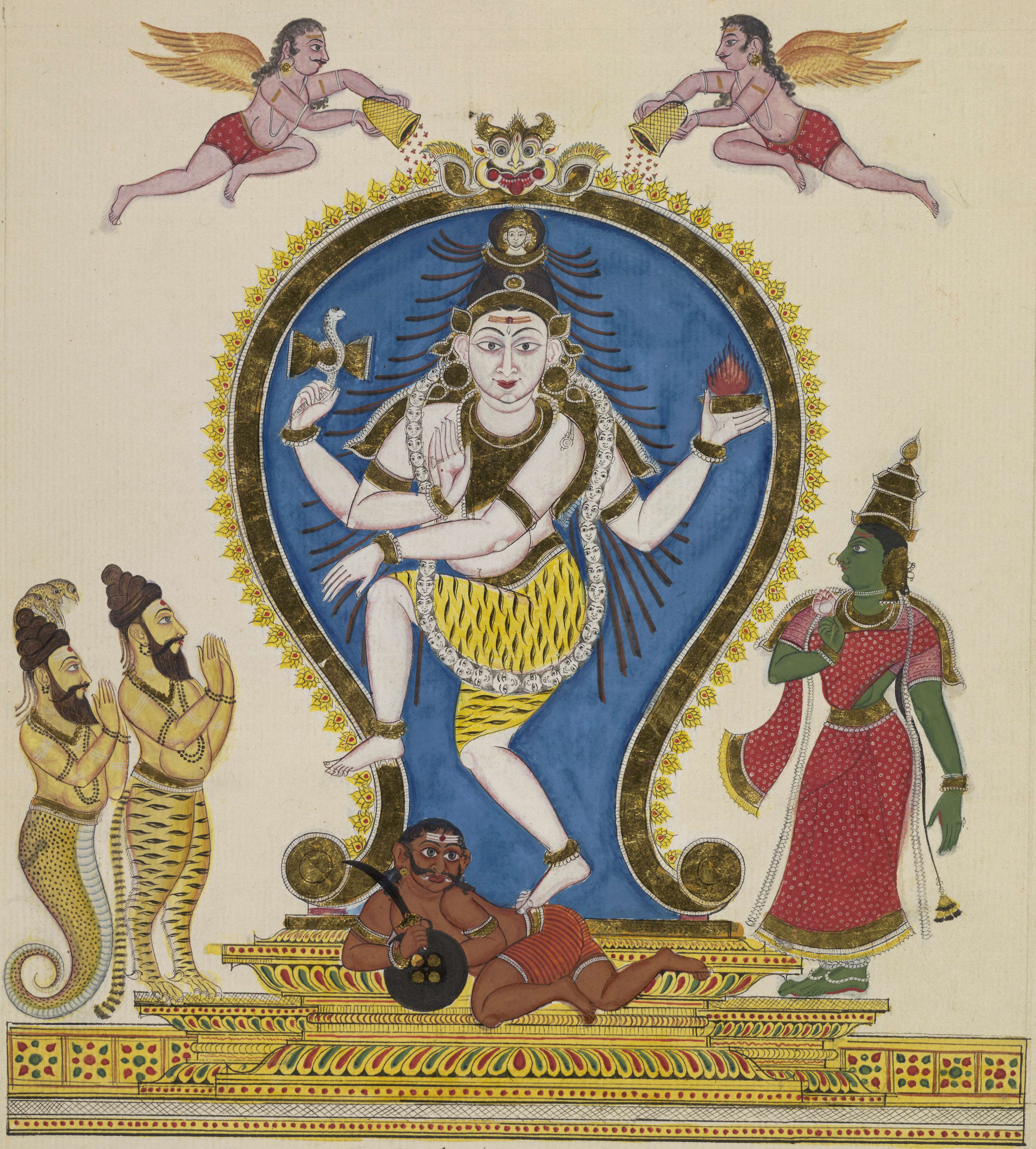|
Indian Sculpture
Sculpture in the Indian subcontinent, partly because of the climate of the Indian subcontinent makes the long-term survival of organic materials difficult, essentially consists of sculpture of stone, metal or terracotta. It is clear there was a great deal of painting, and sculpture in wood and ivory, during these periods, but there are only a few survivals. The main Indian religions had all, after hesitant starts, developed the use of religious sculpture by around the start of the Common Era, and the use of stone was becoming increasingly widespread. The first known sculpture in the Indian subcontinent is from the Indus Valley Civilization, and a more widespread tradition of small terracotta figures, mostly either of women or animals, which predates it. After the collapse of the Indus Valley civilization there is little record of larger sculpture until the Buddhist era, apart from a hoard of copper figures of (somewhat controversially) c. 1500 BCE from Daimabad. Thus the great t ... [...More Info...] [...Related Items...] OR: [Wikipedia] [Google] [Baidu] |
Standing Buddha (Tokyo National Museum)
The Standing Buddha of the Tokyo National Museum is an example of Greco-Buddhist art, Greco-Buddhist statuary. Comparable ones can be found in the Guimet Museum in France, and in the National Museum, New Delhi besides various other museums of South Asia. The statue is dated by the museum to the 1st or 2nd century AD. Context Some of the standing Buddhas (such as the example pictured) were sculpted using the specific Greek technique of making the hands and sometimes the feet in marble to increase the realistic effect, and the rest of the body in another material. It is also defined as the "Great Standing Buddha" Alfred Charles Auguste Foucher especially considered Hellenistic free-standing Buddhas as "the most beautiful, and probably the most ancient of the Buddhas", assigning them to the 1st century Before Christ, BC, and making them the starting point of the anthropomorphic representations of the Buddha. Development From another direction, Chinese historical sources and m ... [...More Info...] [...Related Items...] OR: [Wikipedia] [Google] [Baidu] |
Dancing Girl (prehistoric Sculpture)
''Dancing Girl'' is a prehistoric bronze sculpture made in lost-wax casting about –1751 BC in the Indus Valley Civilisation city of Mohenjo-daro (in modern-day Pakistan), which was one of the earliest cities. The statue is tall, and depicts a nude young woman or girl with stylized ornaments, standing in a confident, naturalistic pose. ''Dancing Girl'' is highly regarded as a work of art. The statue was excavated by British archaeologist Ernest J. H. Mackay, Ernest Mackay in the "HR area" of Mohenjo-daro in 1926. It is now in the National Museum, New Delhi, having been allocated to India at the Partition of India in 1947. History After excavation at Mohenjo-daro in 1926, this and the other finds were initially deposited in the Lahore Museum, but later moved to the Archaeological Survey of India headquarters at New Delhi, where a new "Central Imperial Museum" was being planned for the new capital of the British Raj, in which at least a selection would be displayed. It became a ... [...More Info...] [...Related Items...] OR: [Wikipedia] [Google] [Baidu] |
Shiva Pashupati
Shiva (; , ), also known as Mahadeva (; , , Help:IPA/Sanskrit, [mɐɦaːd̪eːʋɐh]) and Hara, is one of the Hindu deities, principal deities of Hinduism. He is the God in Hinduism, Supreme Being in Shaivism, one of the major traditions within Hinduism. Shiva is known as ''The Destroyer'' within the Trimurti, the Hinduism, Hindu trinity which also includes Brahma and Vishnu. In the Shaivite tradition, Shiva is the Supreme Lord who creates, protects and transforms the universe. In the goddess-oriented Shaktism, Shakta tradition, the Supreme Goddess (Devi) is regarded as the energy and creative power (Shakti) and the equal complementary partner of Shiva. Shiva is one of the five equivalent deities in Panchayatana puja of the Smarta Tradition, Smarta tradition of Hinduism. Shiva has many aspects, benevolent as well as fearsome. In benevolent aspects, he is depicted as an Omniscience, omniscient yogi who lives an Asceticism#Hinduism, ascetic life on Kailasa as well as a house ... [...More Info...] [...Related Items...] OR: [Wikipedia] [Google] [Baidu] |
Pallava
The Pallava dynasty existed from 275 CE to 897 CE, ruling a significant portion of South India, the Deccan, also known as Tondaimandalam. The Pallavas played a crucial role in shaping in particular southern Indian history and heritage. The dynasty rose to prominence after the downfall of the Satavahanas, Satavahana Empire, whom they had formerly served as feudatories. The Pallavas became a major South India, southern Indian power during the reign of Mahendravarman I (600–630 CE) and Narasimhavarman I (630–668 CE), and dominated the southern Andhra Pradesh, Telugu region and the northern parts of the Ancient Tamil country, Tamil region for about 600 years, until the end of the 9th century. Throughout their reign, they remained in constant conflict with both the Chalukyas of Badami, Vatapi to the north, and the Tamil kingdoms of Chola Dynasty, Chola and Pandyas to their south. The Pallavas were finally defeated by the Chola ruler Aditya I in the 9th century CE. The Pallav ... [...More Info...] [...Related Items...] OR: [Wikipedia] [Google] [Baidu] |
Group Of Monuments At Mahabalipuram
The Group of Monuments at Mahabalipuram is a collection of 7th- and 8th-century CE religious monuments in the coastal resort town of Mahabalipuram, Tamil Nadu, India and is a UNESCO World Heritage Site. It is on the Coromandel Coast of the Bay of Bengal, about south of Chennai.Mamallapuram , Encyclopedia Britannica The site has 40 ancient monuments and Hindu temples, including one of the largest open-air rock reliefs in the world: the Descent of the Ganges (Mahabalipuram), ''Descent of the Ganges'' or ''Arjuna's Penance''. The group contains several categories of monuments: ''ratha'' temples with monolithic processional chariots, built between 630 and 668; Cave Temples of Mahabalipuram, ''mandapa viharas'' (cave temples) with narratives fr ... [...More Info...] [...Related Items...] OR: [Wikipedia] [Google] [Baidu] |
Nataraja
Nataraja (/ n̪əʈəɾɑd͡ʒᵊ/ ,, ; , ''Naṭarājar'' Telugu: నటరాజు,''Naṭarāju''), also known as Adalvallan (), is a depiction of Shiva, one of the main deities in Hinduism, as the divine cosmic dancer. His dance is called the tandava.''Encyclopædia Britannica'' (2015) The pose and artwork are described in many Hindu texts such as the ''Tevaram'' and '' Thiruvasagam'' in Tamil and the ''Amshumadagama'' and ''Uttarakamika agama'' in Sanskrit and the Grantha texts. The dance ''murti'' is featured in all major Hindu temples of Shaivism, and is a well-known sculptural symbol in India and popularly used as a symbol of Indian culture, as one of the finest illustrations of Hindu art. This form is also referred to as Kuththan (), Sabesan (), and Ambalavanan () in various Tamil texts. The sculpture is symbolic of Shiva as the lord of dance and dramatic arts, with its style and proportions made according to Hindu texts on arts. Tamil devotional texts such as ... [...More Info...] [...Related Items...] OR: [Wikipedia] [Google] [Baidu] |
Shiva
Shiva (; , ), also known as Mahadeva (; , , Help:IPA/Sanskrit, [mɐɦaːd̪eːʋɐh]) and Hara, is one of the Hindu deities, principal deities of Hinduism. He is the God in Hinduism, Supreme Being in Shaivism, one of the major traditions within Hinduism. Shiva is known as ''The Destroyer'' within the Trimurti, the Hinduism, Hindu trinity which also includes Brahma and Vishnu. In the Shaivite tradition, Shiva is the Supreme Lord who creates, protects and transforms the universe. In the goddess-oriented Shaktism, Shakta tradition, the Supreme Goddess (Devi) is regarded as the energy and creative power (Shakti) and the equal complementary partner of Shiva. Shiva is one of the five equivalent deities in Panchayatana puja of the Smarta Tradition, Smarta tradition of Hinduism. Shiva has many aspects, benevolent as well as fearsome. In benevolent aspects, he is depicted as an Omniscience, omniscient yogi who lives an Asceticism#Hinduism, ascetic life on Kailasa as well as a house ... [...More Info...] [...Related Items...] OR: [Wikipedia] [Google] [Baidu] |
South India
South India, also known as Southern India or Peninsular India, is the southern part of the Deccan Peninsula in India encompassing the states of Andhra Pradesh, Karnataka, Kerala, Tamil Nadu and Telangana as well as the union territories of Lakshadweep and Puducherry, occupying 19.31% of India's area () and 20% of India's population. It is bound by the Bay of Bengal in the east, the Arabian Sea in the west and the Indian Ocean in the south. The geography of the region is diverse, with two mountain ranges, the Western and Eastern Ghats, bordering the plateau heartland. The Godavari, Krishna, Kaveri, Penna, Tungabhadra and Vaigai rivers are important non-perennial sources of water. Chennai, Bengaluru, Hyderabad, Coimbatore and Kochi are the largest urban areas in the region. The majority of the people in South India speak at least one of the four major Dravidian languages: Telugu, Tamil, Kannada and Malayalam. During its history, a number of dynastic kingdoms ruled ove ... [...More Info...] [...Related Items...] OR: [Wikipedia] [Google] [Baidu] |
Chola
The Chola Empire, which is often referred to as the Imperial Cholas, was a medieval thalassocratic empire based in southern India that was ruled by the Chola dynasty, and comprised overseas dominions, protectorates and spheres of influence in southeast Asia. The power and the prestige the Cholas had among political powers in South, Southeast, and East Asia at its peak is evident in their expeditions to the Ganges, naval raids on cities of the Srivijaya Empire on the island of Sumatra, and their repeated embassies to China. K. A. Nilakanta Sastri, ''A History of South India'', p. 158 The Chola fleet represented the peak of ancient Indian maritime capacity. Around 1070, the Cholas began to lose almost all of their overseas territories but the later Cholas (1070–1279) continued to rule portions of southern India. The Chola empire went into decline at the beginning of the 13th century with the rise of the Pandyan dynasty, which ultimately caused the Chola's downfall. K. A ... [...More Info...] [...Related Items...] OR: [Wikipedia] [Google] [Baidu] |
Yakshi
Yakshinis or Yakshis (, , Prakrit: ) are a class of female nature spirits in Hindu, Buddhist, and Jain religious mythologies that are different from Devas and Asuras and Gandharvas or Apsaras. Yakshinis and their male counterparts, the Yakshas, are one of the many paranormal beings associated with the centuries-old sacred groves of India. Yakshis are also found in the traditional legends of Northeastern Indian tribes, ancient legends of Kerala, and in the folktales of Kashmiri Muslims. Sikhism also mentions yakshas in its sacred texts. The well behaved and benign ones are worshipped as tutelaries, they are the attendees of Kubera, the treasurer of the gods, and also the Hindu god of wealth who ruled Himalayan kingdom of Alaka. There are also malign and mischievous yakshinis with poltergeist-like behaviours, that can haunt and curse humans according to Indian folklore. The ashoka tree is closely associated with yakshinis. The young girl at the foot of the tree is an a ... [...More Info...] [...Related Items...] OR: [Wikipedia] [Google] [Baidu] |
Elephanta Caves
The Elephanta Caves are a collection of cave temples predominantly dedicated to the Hindu god Shiva, which have been designated a UNESCO World Heritage Site. They are on Elephanta Island, or ''Gharapuri'' (literally meaning "the city of caves"), in Mumbai Harbour, east of Mumbai in the Indian state of Maharashtra. The island, about west of the Jawaharlal Nehru Port, consists of five Hindu caves, a few Buddhist stupa mounds that date back to the 2nd century BCE,Elephanta Island Encyclopedia Britannica and two Buddhist caves with water tanks. The Elephanta Caves contain rock-cut stone sculptures, mostly in high |








